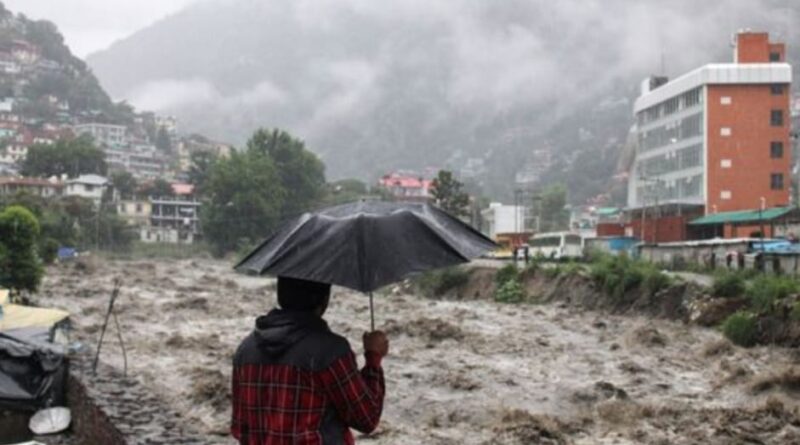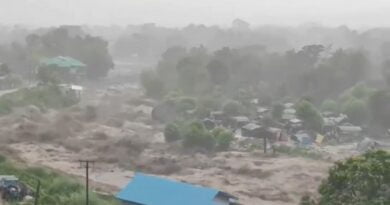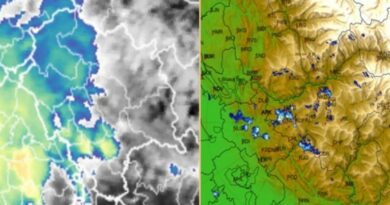Is the Himalayan tragedy Natural or man-made?
This North Western Himalayan State is currently in dire need of humanitarian assistance as around 185 people have died and 212 have suffered life-threatening injuries in various rain-related mishaps in the last months and the loss figures to property have mounted upto Rs 6000 Crore in official figures and rough estimate about ten thousand of Crore. The loss if accounted in actual terms including a loss to the human and private properties and loss renders to the National Highways and its further implications to the economy including Tourism, Hydropower, agriculture, horticulture, and revenues might be more than Rs 25000 Crore.
The most natural and anthropogenic reason for these disasters is Landslides. In one month of Monsoon season, the state recorded around 71 landslides which is more than any other rain season. According to the state Disaster Management Authority, out of 68 landslides occurred 54 people were killed in the landslides and flash flood fall in the Central Notified Disaster 129 in state notified disaster. Landslides took 38 lives so far including 19 in Shimla, eight in Kullu and three in Kinnaur and Solan, two in Mandi and Chamba, and one in Sirmaur. However, the Flash flood took 16 lives including 12 in Kullu and one each in Chamba, Bilaspur, Solan, and Mandi district.
According to the National Disaster Management Authority state of Himachal Pradesh is one among thirteen mountain states and is characterized by an extreme landscape featuring several peaks and extensive river systems. Himachal Pradesh is spread across valleys with many perennial rivers flowing through them. Around 90% of the state’s population lives in rural areas. Agriculture, horticulture, hydro-power, and tourism are important constituents of the state’s economy.
According to Landslide Atlas 2023 state of Himachal Pradesh recorded 1561 landslides between 2014 to 2017. In the year 2014, the state recorded 922 landslides, 172 in 2017 and 51 in 2013, and two in 2001. Earlier this state recorded the highest number of 413 landslides in 1998.
The Landslide Atlas of India which is landslide exposure analysis carried out in the mountain areas by the National Remote Sensing Center on satellite mapping shows that Rudrprayag district of Uttarakhand has the highest landslide density in the country however 147 districts in the 17 states and two union territory are also exposure to landslides. Mandi district of Himachal Pradesh ranked the 16th among top landslide exposure districts in the country, It was followed by Hamirpur 25 rank, Bilaspur -30, Chamba- 32, Solan -37, Kinnuar-46, Kullu-57, Shimla-61, and Kangra-62 and Una -70, Sirmaur 88, Lahaul Spiti 126 and Shimla not figures among 147 landslides exposure district.
The keeping the vulnerability of landslides prone of Atlas mapping the number of casualties and incidents that occurred in the current monsoon season indicates that the highest vulnerable Hamirpur district did not record any major landslides and Solan district which figured few landslides. This may be due to the intensity of rainfall and increasing human activities. The Kullu and Solan district suffered massive losses along the four lanes which are coming into the district. However, Shimla district which is the lowest rung in the landslide-prone district reported most of the causality.
The figures indicate the reverse of the landslide vulnerability needs to be addressed, moreover, monsoon activities and rainfall due to western disturbances may be reported 500 mm in the first month of Monsoon in the state. The excess of monsoon in the season was around 100 percent which is far away from the Monsoon forecast which predicted erratic monsoon rain in the state.
It is the first time flood water affected low-line areas of states including many villages of Kangra, Una, and Solan districts. The national atlas of flood till 2022 did not report any incident of flood in Himachal Pradesh however many North East Himalayan states in the North East including Manipur and Tripura also affected by the flash flood. The avalanches, thawing of glaciers, and unseasonal snowfall also marked the unprecedented weather pattern as Kinnuar and Lahaul Spiti districts registered only five to ten percent of the annual rainfall recorded 3340 percent and 650 pc excess rainfall.
The NRSC said that the whole process of landslide phenomena is dependent on two groups of causative factors as below: Geological / Topographic factors and Triggering Factors. Among the Geological or topographic factors including Lithology, Geological structures (fault, trust, lineament, etc), Slope-dip (bedding, joint) relation, Geomorphology, Drainage, Slope angle, slope aspect, and slope morphology, Land use or land cover, Soil texture, and depth, Rock weathering. The geological factors are often considered for the Landslide Susceptibility Zonation(LSZ), as they play a dominant role in the prognosis of landslides. The second causative that is Triggering Factors caused by Anthropogeny including rainfall and earthquake
About 2000 km stretch of routes was taken up for LSZ study, for convenience in handling the huge database, the routes were divided into different sectors as NRSC include Himachal Pradesh’s three LSZ including Shimla – Rampur – Sarahan – Sumdo, Shimla – Bilaspur – Kulu – Manali and Dalhousie – Chamba – Brahmaur for the LSZ study.
NRSC states that the occurrence of landslides in an area is due to the interplay of favorable terrain parameters such as slope, lithology, topography, and land use which trigger landslides in response to rainfall or earthquake events. Preparation of landslide inventory, hazard, and risk mapping is done in India using satellite data to analyze the cause of landslides which is mostly found to be Litho-tectonic control- earthquake, Precipitation (rainfall) control.
In India, the major areas which are affected by landslides are: the Northwest Himalayas contribute about 66.5 percent of landslides in India, followed by the Northeast Himalayas -18.8 percent and the Western Ghats – 14.7 pc.
A regional landslide early warning system for selective routes of HP, Uttarakhand, and NER is operational on an experimental basis for the monsoon season. It uses rainfall forecast data from MOSADAC, IMD, and Climate Prediction Center (CPC)
The rainfall threshold for landslides is the value which when reached or exceeded is likely to trigger landslides. Rainfall thresholding for slope failure could be established using a process-based, empirical, or statistical approach. Historical data on landslide-causing rainfall events and the corresponding landslide records could be used to establish rainfall thresholds for various geographical extents based on consideration of specific rainfall events or using antecedent conditions.
The I-D-based thresholding is the most widely used empirical thresholding method. The thresholding is done by drawing lower-bound lines on plots of points representing landslide-triggering rainfall events. The daily, 3-day cumulative, and 15-day & 30-day antecedent rainfall values associated with landslides had been subjected to binary logistic regression using landslides as the dichotomous dependent variable. significant predictors influencing slope failure. By using a binary logistic regression model the slope failure triggering probability is estimated.
Interestingly National Remote sensing center Hyderabad forecasted Sep 2, 2017, massive landslides in Shimla on the Dhalli-Shimla bypass road near the Bhatkufar fruit market. three-day advance saving a large number of causality. For the benefit of State and district disaster management authority, state government, and researchers NRSC has developed a mobile app Bhuvan Film to collect data and predict landslides.
The report published in 2022 by the National Report Sensing Centre in the Landslide atlas said that Kotropi village of Mandi district occurred on Sunday that is on August 13, 2017, on Mandi -Pathankot NH 154 between Mandi town and Jogindernagar in the Mandi district, Himachal Pradesh killed around 60 people. The landslide resulted from rotation failure near the crown region followed by a deep transnational mechanism along the landslide body and channelized debris flow along the toe. Interestingly NRSC could not forecast the Kotropi landslides and the number of buses that were washed down due to their stoppage at a food eatery could be averted. The advancement of technology still failed to protect life and property as it may be the communication gaps and negligence of NDMA, SDMA, and DDMA to not issue proper advisories despite there being a date of LSZ with these bodies.
The state of Himachal Pradesh and the Center which currently figures so many death even more than in 2017 due to similar mishaps remained to fail to predict the landslides accurately however precision data is available with the NRSC, NDMA, SDMA, and IMD. They forget about the forecasting of landslides disaster the how NRSC missed the Delhi Flood which was so far attributed to man-made decisions.




It would be interesting to know how many “landslides” occurred above road cuts, how many on fills of unconsolidated materials below graded areas like roads, and how many where no such “improvements” had been made. Removing even a little buttressing material from a slope is often ill-advised. Try this with a sand model.